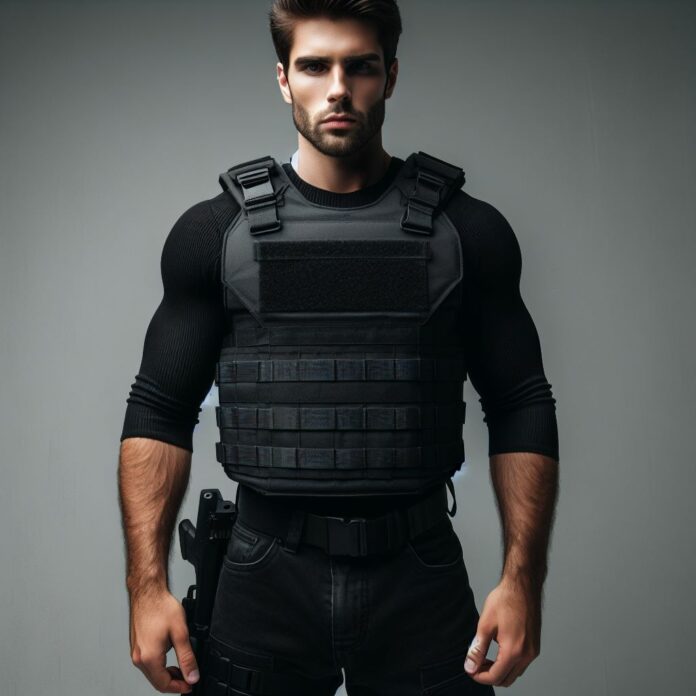Bulletproof vests play a crucial role in protecting the lives of law enforcement officers, military personnel, and individuals in high-risk professions.
Understanding how a bulletproof vest work involves a combination of advanced materials and design elements that effectively absorb and disperse kinetic energy, providing reliable protection against ballistic threats.
The materials used in bulletproof vests vary, but they often include fibers such as Kevlar, Dyneema, or Spectra, which are renowned for their high tensile strength. These materials are combined in layers to form a flexible and resistant barrier.
There are different types of bulletproof vests available, including soft armor vests, hard armor vests, and composite armor vests, each offering varying levels of protection based on the needs and requirements of the wearer.
Bulletproof vests undergo rigorous testing and certification processes to ensure their reliability and effectiveness.
However, it is important to note that bulletproof vests have certain limitations, such as their ability to protect against specific types of ammunition, close-range shots, and the duration of protection against repeated impacts.
Caring for and maintaining a bulletproof vest is essential to ensure its longevity and optimal performance. Regular inspection, cleaning, and proper storage are necessary to maintain the integrity and effectiveness of the vest.
By understanding how bulletproof vests work and their limitations, wearers can make informed decisions and appreciate the critical role these vests play in personal safety and protection.
What is a Bulletproof Vest?
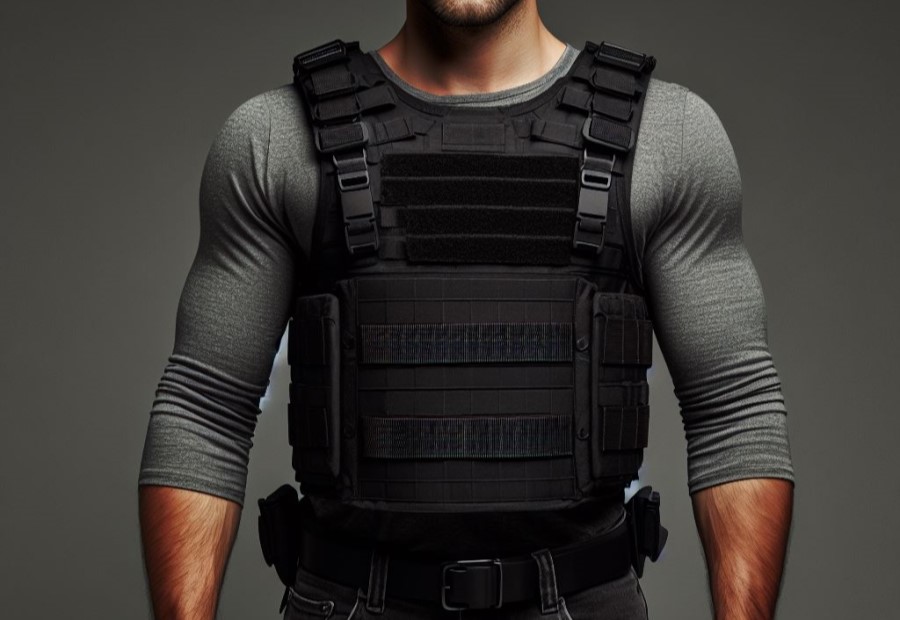
A bulletproof vest, also known as a ballistic vest, is a type of protective clothing designed to shield the wearer from bullets and projectiles. It is typically made using strong and durable materials such as Kevlar or other synthetic fibers.
These vests work by distributing the force of the bullet across a large surface area, reducing the impact on the wearer’s body.
The fibers in the vest are tightly woven together, creating a barrier that can stop or slow down bullets, preventing them from penetrating the vest and causing injury.
Bulletproof vests are commonly used by military personnel, law enforcement officers, and individuals in high-risk professions.
They provide an added layer of protection and increase the chances of survival in dangerous situations involving firearms.
It is important to note that while bulletproof vests can greatly reduce the risk of injury, they are not completely bulletproof, and their effectiveness depends on the type of ammunition and the speed of the bullet.
What is the Purpose of a Bulletproof Vest?
The purpose of a bulletproof vest is to protect the wearer from potential gunfire or projectile attacks. The main objective of wearing a bulletproof vest is to provide an added layer of protection and increase the safety of those in harm’s way.
These vests are designed using multiple layers of strong and resilient materials such as Kevlar or other high-performance fibers.
By doing so, they are capable of absorbing and dispersing the energy of a bullet, reducing its impact and preventing it from penetrating the wearer’s body. This significantly reduces the likelihood of fatal injuries.
Bulletproof vests are primarily worn by law enforcement officers, military personnel, and individuals who may face potential threats or dangerous situations.
They are especially crucial for individuals working in high-risk professions like security guards, SWAT teams, or soldiers deployed in combat zones.
These vests are essential in providing protection and ensuring the safety of those who put themselves in harm’s way.
It is important to note that while bulletproof vests are effective in stopping or reducing the impact of bullets, they do have limitations. The level of protection may vary depending on the type and quality of the vest.
Additionally, they may not provide complete protection against all types of ammunition or close-range shots. Hence, regular maintenance and proper care of the vest are crucial to ensure its effectiveness.
When choosing a bulletproof vest, it is essential to consider its purpose, the level of protection required, and the specific threats that may be encountered.
Consulting with experts and considering reputable brands or certified vests can help make an informed decision regarding their purchase.
How Does a Bulletproof Vest Differ from Regular Clothing?
A bulletproof vest differs from regular clothing in several key ways.
Firstly, the materials used in a bulletproof vest are specifically designed to provide protection against bullets and other projectiles. Regular clothing, on the other hand, is typically made from fabrics that are not capable of stopping bullets.
Secondly, bulletproof vests are constructed with layers of strong and durable materials, such as Kevlar or ballistic plates, which can absorb and disperse the force of a bullet upon impact.
This makes them much more effective at stopping bullets than regular clothing, which offers no such protection.
Additionally, bulletproof vests are designed to cover and protect vital areas of the body, such as the chest, back, and sometimes the sides.
They are often equipped with adjustable straps and fastenings to ensure a secure and comfortable fit. Regular clothing, however, does not provide the same level of coverage or adjustability.
It is important to note that bulletproof vests are not completely impervious to all types of ammunition. While they can significantly reduce the likelihood of injury, no vest can guarantee complete protection against high-powered or armor-piercing bullets.
How Do Bulletproof Vests Work?
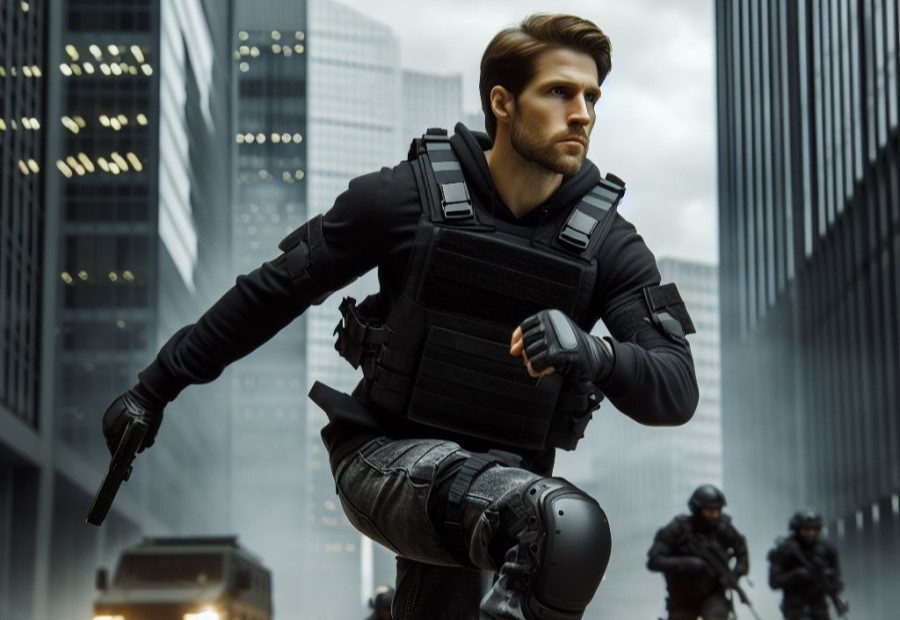
Materials Used in Bulletproof Vests
The materials used in bulletproof vests play a crucial role in their ability to protect against projectiles. These materials, including Aramid fibers, UHMWPE, ceramic plates, and steel, are carefully chosen for their strength and resistance to deformation.
| Aramid fibers: | These synthetic fibers, such as Kevlar, are widely used in bulletproof vests due to their high strength-to-weight ratio. They can absorb and dissipate the impact energy of a bullet. |
| UHMWPE: | Ultra-High Molecular Weight Polyethylene is another material that is commonly used in bulletproof vests. It offers excellent ballistic resistance while being lightweight and flexible. |
| Ceramic plates: | Ceramic materials like alumina or boron carbide are often used as inserts in bulletproof vests. They are hard and can shatter the bullet upon impact, distributing the energy and preventing penetration. |
| Steel: | Steel plates are used in certain types of bulletproof vests, particularly in hard armor vests. Steel provides excellent protection against high-velocity projectiles but is heavier compared to other materials. |
It’s important to note that bulletproof vests often combine multiple layers of different materials to maximize their protective capabilities. The arrangement and combination of these materials depend on the specific design and intended level of protection of the vest.
When choosing a bulletproof vest, it’s essential to understand the materials used to ensure it meets your needs and offers the desired level of protection.
Consider factors such as weight, flexibility, and the type of threats you may encounter. Consulting with a professional or knowledgeable supplier can help you find the best vest for your requirements.
Mechanics of Bullet Resistance
Bulletproof vests rely on the mechanics of bullet resistance to safeguard the wearer against projectiles. Their effectiveness lies in the combination of various materials, which enable them to absorb and distribute the energy of impact.
The construction of bulletproof vests involves layering multiple strong synthetic fibers like Kevlar or Dyneema.
These layers work together to slow down and halt the bullet. The fibers within the layers are tightly woven or arranged in a specific pattern to enhance their strength.
The materials used in bulletproof vests possess high tensile strength and are resistant to stretching or breaking. This enables them to absorb the kinetic energy of the bullet, preventing it from penetrating the vest and harming the wearer’s body.
When a bullet strikes a bulletproof vest, the layers of fibers deform and spread out the force over a larger area. This dispersion of energy minimizes the impact and reduces the risk of injury.
Additionally, the mechanics of bullet resistance include considering backface deformation, which refers to the dent or depression on the backside of the vest when it is impacted by a bullet.
Measuring the backface deformation helps assess the level of protection provided by the vest.
Understanding the mechanics of bullet resistance is vital when choosing and evaluating the effectiveness of different types of bulletproof vests. It ensures that the vest can effectively halt projectiles and safeguard the wearer from harm.
To make an informed choice when selecting a bulletproof vest, it is important to consider the level of protection it offers, such as the NIJ rating.
Pay attention to the materials utilized as they can impact the weight and flexibility of the vest. Moreover, proper fitting and maintenance are crucial to maximize its effectiveness and lifespan.
Types of Bulletproof Vests
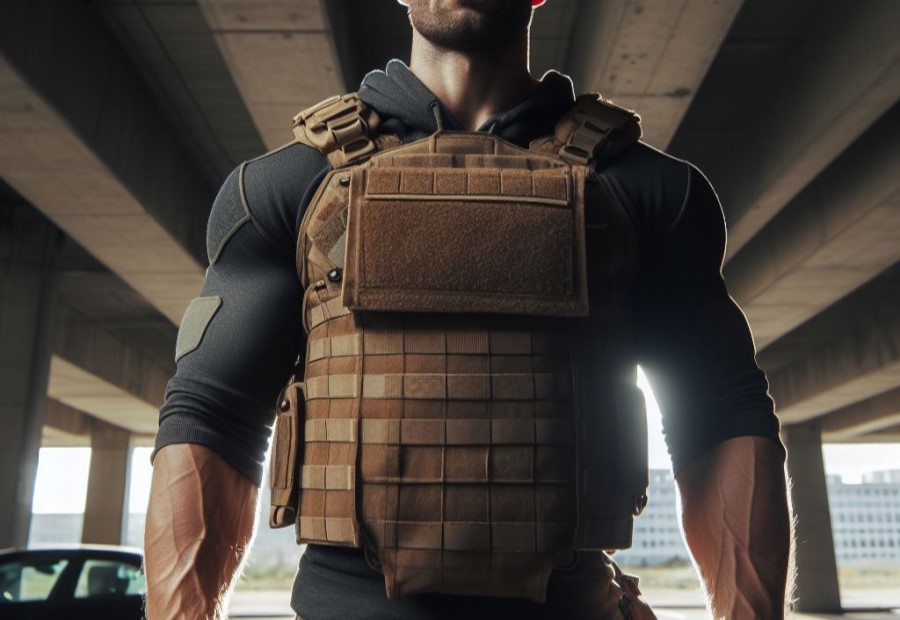
Soft Armor Vest
The soft armor vest is a type of bulletproof vest that is commonly used by law enforcement officers and security personnel. Here are some important details about the soft armor vest:
- Material: The soft armor vest is typically made of multiple layers of strong synthetic fibers, such as Kevlar or Dyneema, that are woven together to create a flexible and lightweight fabric.
- Protection: The soft armor vest is designed to provide protection against certain types of handgun ammunition, such as 9mm or .40 caliber. It is not as effective against rifle rounds or higher caliber ammunition.
- Comfort: Due to its flexible construction, the soft armor vest offers a greater range of motion and increased comfort compared to other types of bulletproof vests. This makes it suitable for prolonged wear during active duty or long shifts.
- Concealability: The soft armor vest can be easily concealed under clothing, allowing law enforcement officers to maintain a low profile while still having the necessary protection.
- Level of Protection: Soft armor vests are available in different levels of protection, ranging from Level I to Level IIIA. These levels indicate the ability of the vest to stop different types of ammunition.
Hard Armor Vest
The hard armor vest is a critical component of bulletproof vests, providing an additional layer of protection against high-velocity projectiles and rifle rounds. Here are some important points to know about hard armor vests:
- Materials: Hard armor vests are usually constructed using durable and robust materials such as ceramic plates, steel plates, or composite materials.
- Enhanced Protection: Hard armor vests offer a superior level of protection compared to soft armor vests. They are specifically designed to withstand impacts from rifle rounds, safeguarding the wearer’s vital organs.
- Bullet Resistance: Hard armor vests are constructed with multiple layers of materials that effectively absorb and disperse the energy of the bullet upon impact, significantly reducing the risk of penetration and injury.
- Plate Inserts: Hard armor vests often include plate inserts that can be easily added or removed depending on the desired level of protection. These inserts are commonly made of ceramic or steel, providing additional resistance against rifle rounds.
- Ballistic Rating: Hard armor vests are frequently assigned ballistic ratings that indicate their ability to withstand specific ammunition calibers and velocities. These ratings establish a standardized measure of their protective capabilities.
Composite Armor Vest
When it comes to bulletproof vests, the Composite Armor Vest is the ultimate choice for excellent protection. This vest incorporates a combination of strong synthetic fibers to enhance its resistance to bullets and other projectiles.
| Materials: | A combination of strong synthetic fibers |
| Characteristics: | The Composite Armor Vest is specifically designed to be lightweight and flexible, allowing for ease of movement while providing optimum protection. |
| Protection level: | This vest ensures effective protection against a range of ammunition types, including handgun rounds and some rifle rounds. |
| Availability: | The Composite Armor Vest is readily available to law enforcement agencies, military personnel, and private citizens seeking personal protection. |
| Care and maintenance: | Regular inspection and proper storage are essential to ensure the effectiveness of the Composite Armor Vest. It should be kept clean and dry to prevent degradation of the materials. |
The Composite Armor Vest offers a reliable and efficient solution for those in need of protection against various threats. Its combination of materials and design make it the preferred choice for many individuals and organizations.
Testing and Certification of Bulletproof Vests
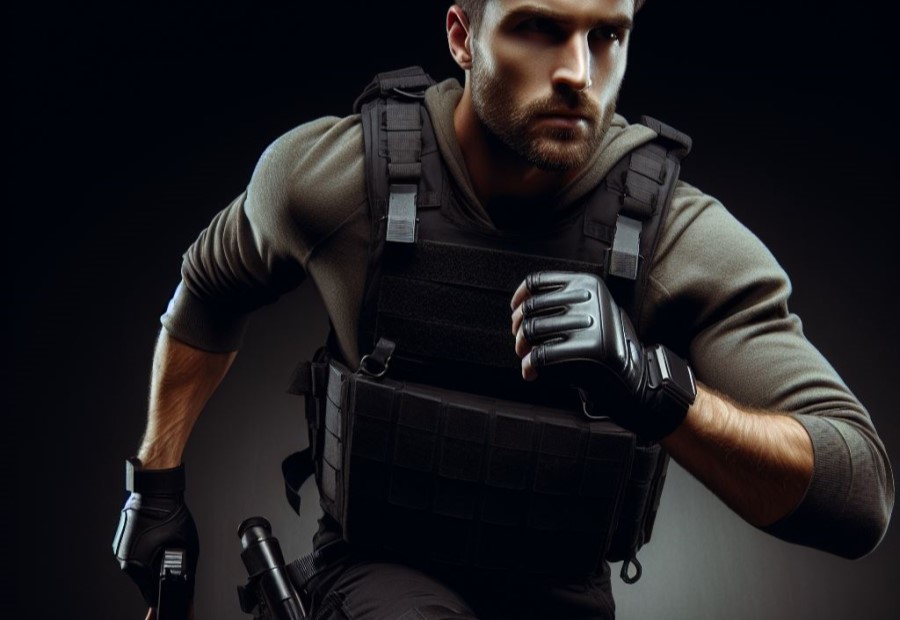
Testing and certification of bulletproof vests is of utmost importance to guarantee their effectiveness and reliability. Vests undergo thorough testing to assess their resistance to bullets and other types of impact.
The testing process typically includes subjecting the vest to bullets of varying velocities and calibers. The performance of the vests is evaluated based on their ability to halt the bullets and prevent penetration, as well as their impact on the wearer’s body.
Certification is granted to vests that meet the predetermined criteria established by regulatory bodies, such as the National Institute of Justice (NIJ) in the United States.
This certification ensures that the vests provide the necessary levels of protection for law enforcement and military personnel.
Fact: The NIJ conducts tests and grants certification for different levels of bullet resistance for vests, ranging from Level II to Level IV. Level II vests are designed to safeguard against lower-velocity handgun rounds, while Level IV vests have the capability to withstand armor-piercing rifle rounds.
Limitations of Bulletproof Vests
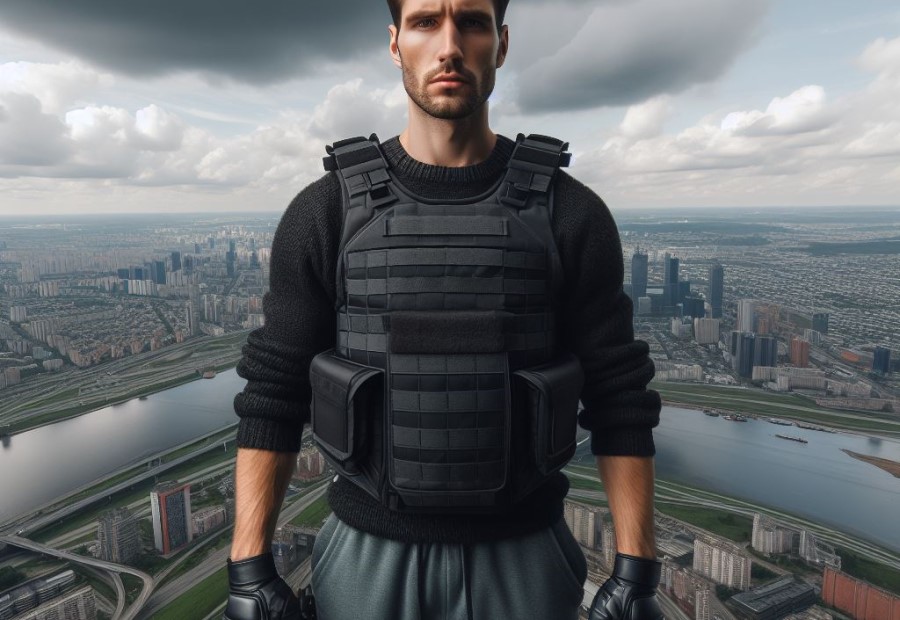
Protection Against Different Ammunition Types
When it comes to the protection of a bulletproof vest, it is important to consider its effectiveness against different ammunition types.
Different ammunition can vary in terms of caliber, velocity, and penetrating power. It is vital for a bulletproof vest to be able to provide protection against different ammunition types to ensure the safety of the wearer.
Below is a table highlighting the levels of protection offered by bulletproof vests against different ammunition types:
| Protection Level | Ammunition Type |
| Level II | Pistol rounds (.22LR, 9mm, .40 S&W, .45 ACP) |
| Level III | High-velocity rifle rounds (7.62x39mm, .308 Winchester) |
| Level IV | Armor-piercing rifle rounds (.30-06 AP, .50 BMG) |
It’s important to choose a bulletproof vest that provides the appropriate level of protection based on the potential threats you may encounter. For example, if you anticipate facing only pistol rounds, a Level II vest may be sufficient.
However, if you are in a situation where high-velocity rifle rounds are a possibility, a Level III vest would be more suitable. Additionally, for military or law enforcement personnel facing armor-piercing rifle rounds, a Level IV vest is necessary.
Remember to always consult the manufacturer’s specifications and guidance to ensure the vest you choose offers the necessary protection against different ammunition types you may encounter.
Effectiveness Against Close Range Shots
The effectiveness of bulletproof vests against close range shots depends on various factors.
- Materials used: Bulletproof vests are typically made with strong fibers such as Kevlar or Dyneema. These materials are designed to absorb and disperse the impact of a bullet, reducing the chances of penetration.
- Vest design: The design of the vest, including the number of layers and the arrangement of the ballistic material, can affect its effectiveness against close range shots. Vests with multiple layers or additional protective panels may provide better protection.
- Ballistic rating: Bulletproof vests are tested and certified based on their ability to stop different types of ammunition. A higher ballistic rating indicates a higher level of protection. It’s important to choose a vest with the appropriate rating for the specific threats you may face.
- Proper fit: A properly fitting vest is crucial for maximum effectiveness against close range shots. The vest should be snug but not too tight, allowing for a full range of motion. A poorly fitting vest may leave vulnerable areas exposed.
To ensure the effectiveness of a bulletproof vest against close range shots, it’s important to choose a vest made with high-quality materials, designed for the intended purpose, and properly fitted.
Regular maintenance and inspection of the vest are also essential for its continued effectiveness.
Duration of Protection
The duration of protection provided by a bulletproof vest depends on various factors.
- The quality of the vest: Higher-quality bulletproof vests generally offer longer-lasting protection. These vests are often made with durable materials and undergo rigorous testing to ensure their effectiveness.
- The level of protection: Bulletproof vests are rated based on the level of ballistic protection they provide. Higher levels of protection typically offer longer duration of protection against bullets.
- Wear and tear: Over time, the wear and tear on a bulletproof vest can diminish its effectiveness. It is important to regularly inspect and maintain the vest to ensure it remains in proper working condition.
- Environmental factors: Exposure to extreme temperatures, moisture, and UV rays can degrade the materials of a bulletproof vest and reduce its lifespan.
To maximize the duration of protection provided by a bulletproof vest, it is recommended to follow the manufacturer’s guidelines for care and maintenance.
Regularly inspect the vest for any signs of damage or degradation, and replace it as needed to ensure continued protection.
Caring for and Maintaining a Bulletproof Vest
Caring for and maintaining a bulletproof vest is crucial to ensure its effectiveness and longevity.
- Inspect regularly: Regularly check your bulletproof vest for any signs of damage or wear, such as frayed threads or punctures from previous impacts.
- Clean properly: Follow the manufacturer’s instructions for cleaning your vest. Use mild detergent and water to gently clean the surface, and avoid harsh chemicals or scrubbing that may damage the protective layers.
- Store correctly: Hang your vest or lay it flat in a cool and dry place to avoid moisture, which can degrade the ballistic fibers. Avoid exposing it to direct sunlight, extreme temperatures, or humidity.
- Replace panels when necessary: Over time, the ballistic panels in your vest may degrade or become less effective. Follow the manufacturer’s recommendations for panel replacement to ensure optimal protection.
- Check expiration dates: Some ballistic panels have expiration dates due to the natural degradation of the materials. Make sure to check these dates and replace the panels accordingly.
- Avoid excessive pressure: Do not sit or lean on your vest as it may damage the protective layers or affect its integrity. Treat it with care to maintain its effectiveness.
- Follow usage guidelines: Always wear your vest properly and according to the manufacturer’s instructions. Improper use or adjustment can decrease its effectiveness.
Frequently Asked Questions
How does a bulletproof vest work?
Bulletproof vests work by using strong and durable fibers, such as aramid, to absorb and disperse the energy of a bullet when it hits the vest.
The tightly woven aramid fibers form a dense net that stops the bullet from penetrating the body. The fibers in the vest absorb the bullet’s energy and bring it to a stop before it can cause harm.
What are bulletproof vests made of?
Bulletproof vests are typically made of special fabrics, such as DuPont’s KEVLAR fiber, which is lightweight but incredibly strong. These vests are made up of interlaced strands of fiber that form a dense net.
The fibers are packed tightly together, providing a barrier that can stop bullets from reaching the body.
How do bulletproof vests protect against internal injuries?
When a bullet hits a bulletproof vest, the aramid fibers in the vest absorb the impact and disperse the energy throughout the vest.
This dispersal of energy helps prevent internal injuries by spreading the force of the impact over a wider area. By absorbing and distributing the energy, bulletproof vests reduce the risk of internal injuries.
What types of bullets can bulletproof vests withstand?
Bulletproof vests are designed to withstand rounds of bullets according to a specific protection level. While they can protect against most low-caliber handguns, high-powered weapons, especially rifles, can still penetrate them.
Thicker plates made of rigid ceramics or other materials are designed to withstand larger rounds, providing enhanced protection.
Can bulletproof vests protect against other types of impact?
Yes, bulletproof vests not only stop bullets from reaching the body but also protect against blunt trauma caused by the force of the bullet.
The densely woven fibers in the vest can absorb and disperse the energy of the impact, reducing the risk of injuries from the forward inertia of the bullet.
Are there different types of bulletproof vests available?
Yes, there are different types of bulletproof vests available for various purposes. Soft body armor, worn by police officers and security guards, is made of web-like nets of special fabrics.
Hard armor, on the other hand, uses metallic or para-aramid components and is primarily used for protection against powerful rifle ammunition. The choice of vest depends on the specific dangers faced and the required level of protection.

